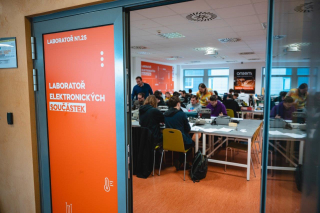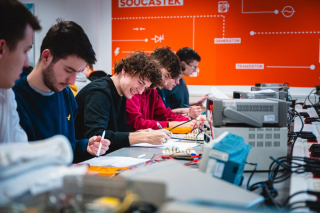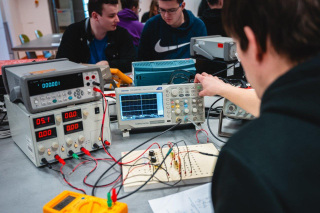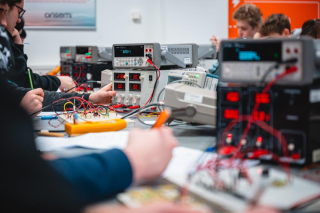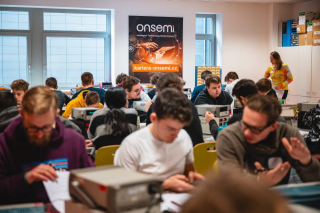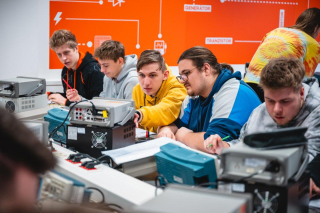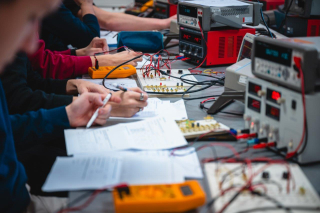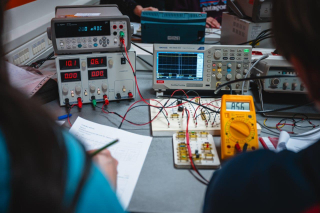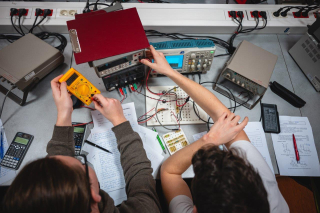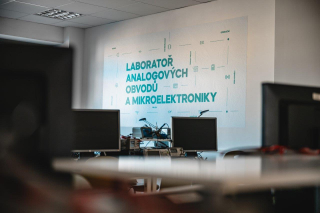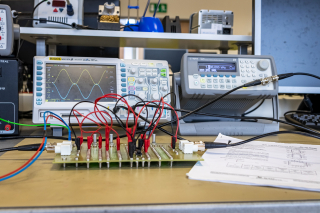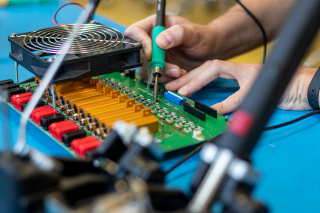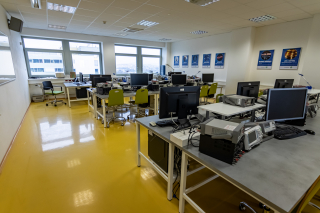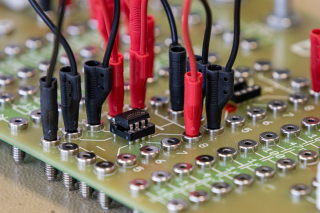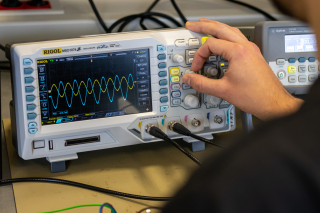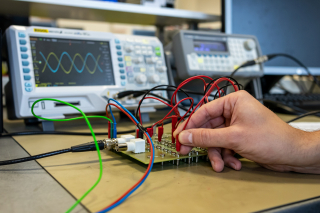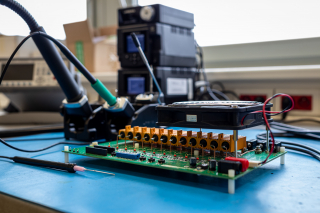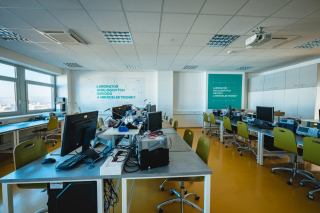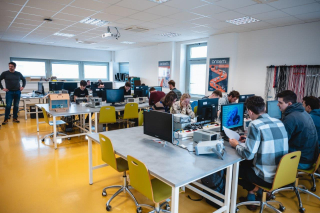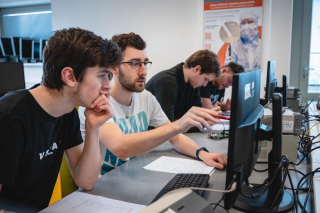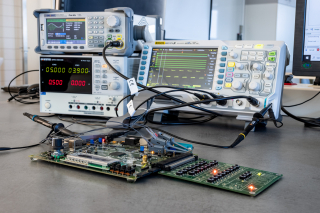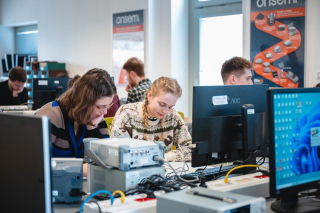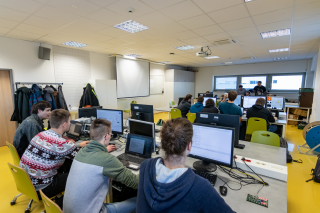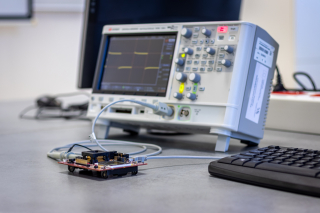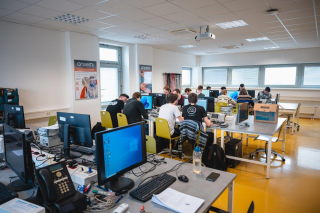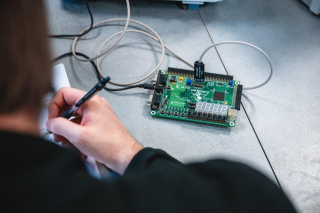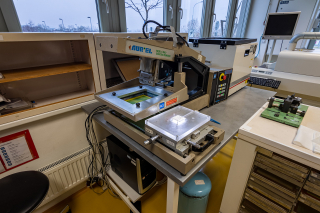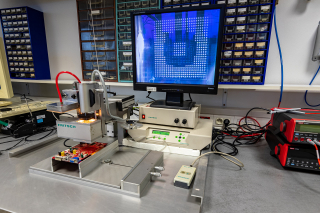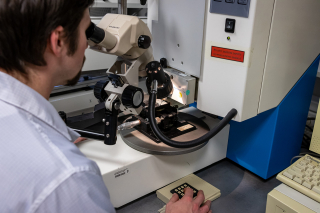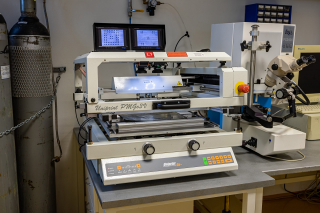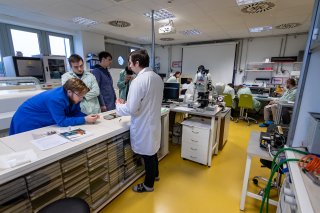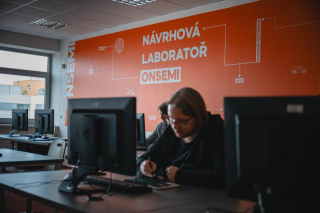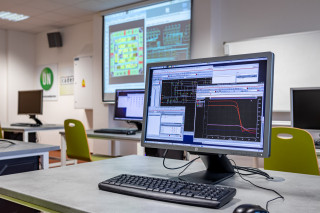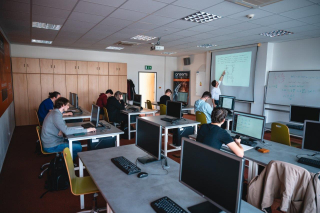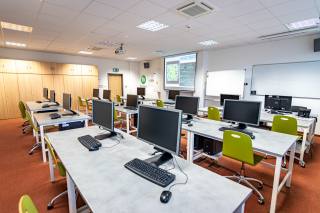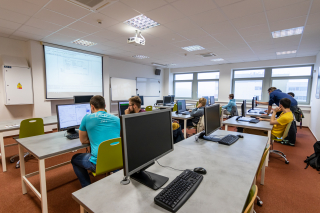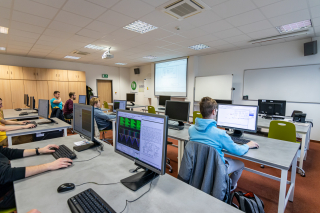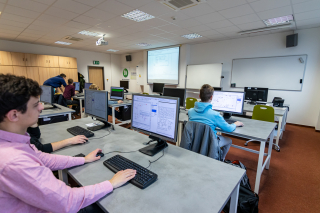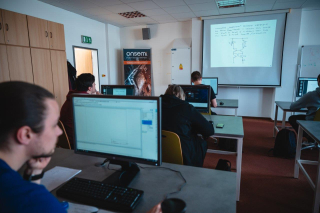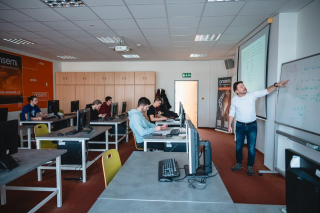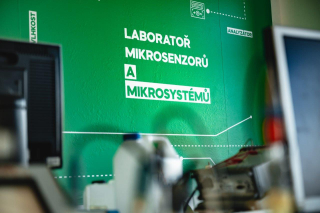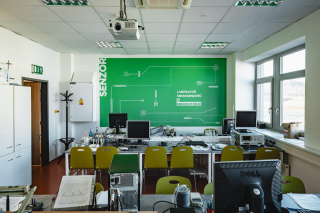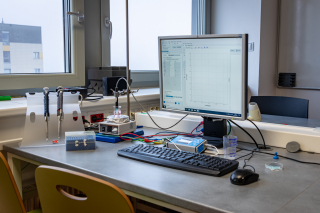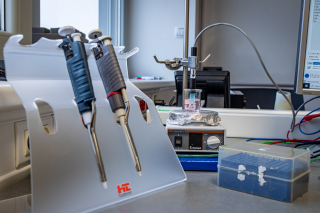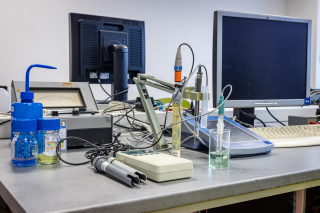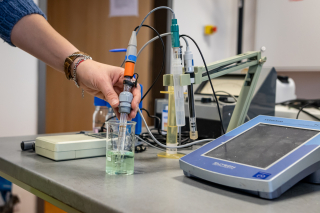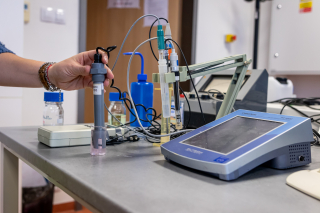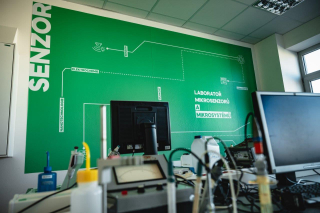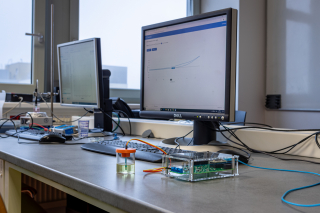Laboratories
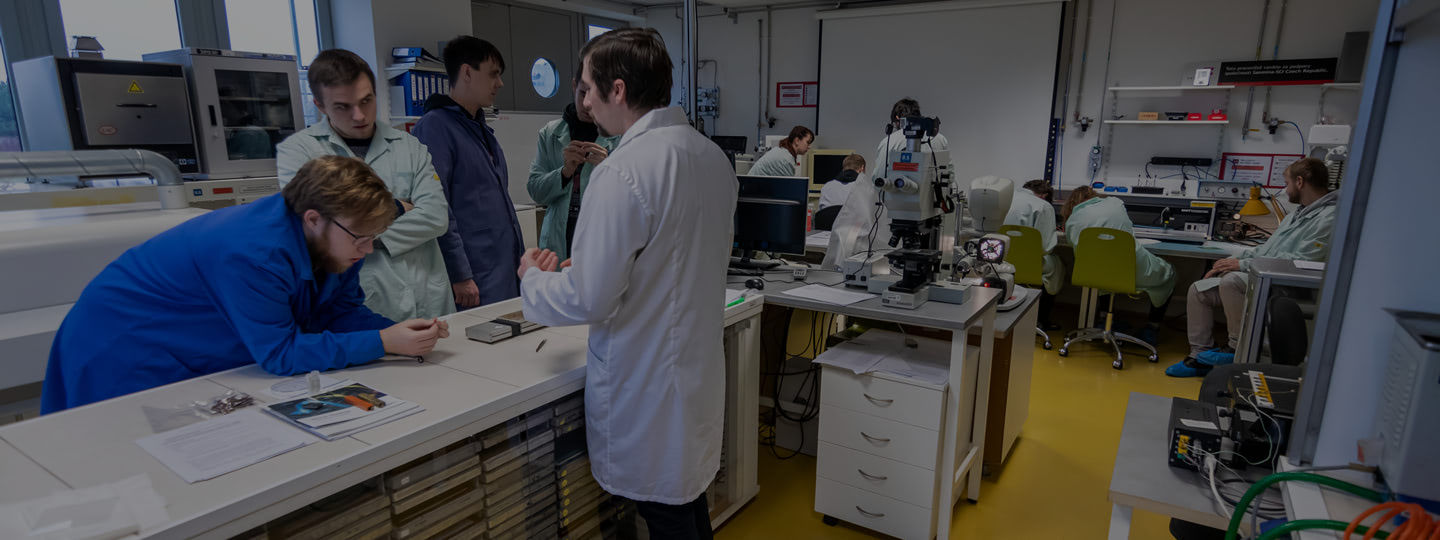
The laboratory training is set in the faculty's state-of-the-art laboratories. Let us have a look at what the students are working on.
Laboratory of Electronic Components
The students learn to understand the characteristics of basic electronic components, such as passive (resistor, capacitor, coil) and semiconductor (transistor, diode) components including modern semiconductors. The laboratory is equipped with an oscilloscope, a signal generator, a power supply and a multimeter. These basic but high-quality equipment obtained by the onsemi company support, help the students to grasp the functionalities of the electronic components they will come across in the industry.
Laboratory of Analog Circuits and Microelectronics
The practicals are outlined to teach the functioning principles of basic analog circuits with active components such as the transistor and operational amplifier. During the microelectronics courses, the students create simple devices, starting from the actual design and proceeding through the assembly to the operating connection. There is a special part of the lab where the students can work on their Masters or Bachelors theses and their own projects. The laboratory is equipped with high-end Keysight and Agilent devices, including oscilloscopes, signal generators, power supplies, and digital multimeters. The broad set of devices comprises also stations for the installation and soldering of electronic components (including SMD).
Laboratory of Digital Circuits
In the laboratory, the students learn to understand the operating principles of both basic and advanced digital circuits and various types of microcontrollers, including their programming. The laboratory features Arduino student kits with ATmega microcontrollers and also high-end FPGA development boards with Xilinx Spartan processors.
Laboratory of Microelectronic Technologies
The laboratory practicals teach the students to make hybrid integrated circuits, install relevant components (with electrical contacts), and to encapsulate the circuits. Also, the students learn to apply various kinds of conductive and resistive pastes to substrates and make circuits from them. Another part of the laboratory training is the use of testing devices to verify the electrical and mechanical properties of the circuits. The testing devices include, for example, continuous furnaces, microscopes, contactors, and shredders.
Onsemi Design Lab
Built in cooperation with onsemi company, the laboratory is utilized mainly for teaching the design of analog integrated circuits and mixed-signal circuits. The laboratory is also used by students working on their bachelor's and master's theses. It also provides a basis for the research and development of customer integrated circuits, both within research projects and direct commercial contracts.
